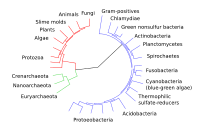【选择】
选择就是发自自我的主动行为,就是自我对对象的主动的态度。自我作为对象关系在个体之中的聚集,他是一个不断地增长起来的量的集合。从时空的意义上看,他集聚接受而来的对象关系之后,他也就背负了更多的矛盾,这矛盾加剧了他与个体之间的冲突,他如果不向外展开,他就不能调和这些矛盾。
自我站在自己的总和特性之上,运用他已经总和出来的原则,开始进一步审视外界。他要按照自己总和出来的指向塑造个体,他用那些已经成为历史的对象关系的视角寻找新的对象,选择新的对象。为了迎接新的对象的到来,他需要把那些已经成为历史的对象关系转移到个体的外面,以减轻个体的负担,并形成新的虚空。于是,他的选择开始了。
选择的第一属性:选择就是对同一指向的不同对象作出抉择。
选择的第二属性:选择就是自我在对象关系中置于主动的地位。
从个体漫长的生命历程看,他的每个历史阶段的自我是最终自我的某个侧面,个体最终自我则是每个阶段性自我积累的结果。从对象关系的扩展到自我的壮大,个体完成了他的初始目的——他存活于对象关系,他改善对象关系,他在对象关系中实现自我的升华。简单地说,个体的一生都在进行着完善自我的过程。而选择,恰恰表达了个体的这一主体性活动。
http://baike.haosou.com/doc/385167-407841.html
逻辑学名词
设f(t)是一逻辑函数,其自变量t为元组变量,函数值只能取逻辑值"真"(True)或"假"(False),则关系R关于函数f(t)的选择运算定义为:
选择运算从指定关系中选择出符合条件的元组(记录)组成一个新的关系。选择运算是针对元组的运算。
selection
1. | [u] 选择;挑选;选拔the process of choosing sb/sth from a group of people or things, usually according to a system |
2. | [c] 被挑选的人(或物);被选中者;入选者a number of people or things that have been chosen from a larger group |
3. | [c] 可供选择的事物a collection of things from which sth can be chosen |
http://cn.bing.com/dict/search?q=selection&FORM=BDVSP2&qpvt=selection
| This article does not cite any references or sources. Please help improve this article by adding citations to reliable sources. Unsourced material may be challenged and removed. (November 2006) |
| Part of a series on |
| Evolutionary biology |
|---|
 |
In the context of evolution, certain traits or alleles of genes segregating within a population may be subject to selection. Under selection, individuals with advantages or "adaptive" traits tend to be more successful than their peers reproductively—meaning they contribute more offspring to the succeeding generation than others do. When these traits have a genetic basis, selection can increase the prevalence of those traits, because offspring will inheritthose traits from their parents. When selection is intense and persistent, adaptive traits become universal to the population or species, which may then be said to have evolved.
Whether or not selection takes place depends on the conditions in which the individuals of a species find themselves. Adults, juveniles, embryos, and eveneggs and sperm may undergo selection. Factors fostering selection include limits on resources (nourishment, habitat space, mates) and the existence of threats (predators, disease, adverse weather). Biologists often refer to such factors as selective pressures, also known as evolutionary pressures.
Natural selection is the most familiar type of selection by name. The breeding of dogs, cows and horses, however, represents "artificial selection", now commonly known as selective breeding, the key process in domestication. Subcategories of natural selection are also sometimes distinguished. These includesexual selection, ecological selection, stabilizing selection, disruptive selection and directional selection (more on these below).
Selection occurs only when the individuals of a population are diverse in their characteristics—or more specifically when the traits of individuals differ with respect to how well they equip them to survive or exploit a particular pressure. In the absence of individual variation, or when variations are selectively neutral, selection does not occur.
Meanwhile, selection does not guarantee that advantageous traits or alleles will become prevalent within a population. Another process of gene frequency alteration in a population is calledgenetic drift, which acts over genes that aren't under selection. But, this drift can't overcome natural selection itself, as it is a 'random sampling' process and Natural Selection is actually an evolutive force. In the face of selection even a so-called deleterious allele may become universal to the members of a species. This is a risk primarily in the case of "weak" selection (e.g. an infectious disease with only a low mortality rate) or small populations.
Though deleterious alleles may sometimes become established, selection may act "negatively" as well as "positively." Negative selection or purifying selection decreases the prevalence of traits that diminish individuals' capacity to succeed reproductively (i.e. their fitness), while positive selection increases the prevalence of adaptive traits.
In biological discussions, traits subject to negative selection are sometimes said to be "selected against," while those under positive selection are said to be "selected for," as in the scenario:During the severe drought affecting the Galapagos Islands, short beaks were selected against due to their relative inability to access tribulus seed nutrients. The following season, female finches displayed a change in their preferences for mates. During that mating season, greater sizes were selected for, as evident by the increase in the number of mating events per season for larger birds.
Types and subtypes[edit]
Aspects of selection may be divided into effects on a phenotype and their causes. The effects are called patterns of selection, and do not necessarily result from particular causes (mechanisms); in fact each pattern can arise from a number of different mechanisms. Stabilizing selection favors individuals with intermediate characteristics while its opposite, disruptive selection, favors those with extreme characteristics; directional selection occurs when characteristics lie along a phenotypic spectrum and the individuals at one end are more successful; and balancing selection is a pattern in which multiple characteristics may be favored.Diversifying selection occurs when rare variants are favored, and is similar to balancing selection.
Mechanisms of selection[edit]Distinct from patterns of selection are mechanisms of selection; for example, disruptive selection often is the result ofdisassortative sexual selection, and balancing selection may result from frequency-dependent selection and overdominance.
See also[edit]Further reading[edit]Archiver|干细胞之家 ( 吉ICP备2021004615号-3 )
GMT+8, 2024-4-25 08:06
Powered by Discuz! X1.5
© 2001-2010 Comsenz Inc.